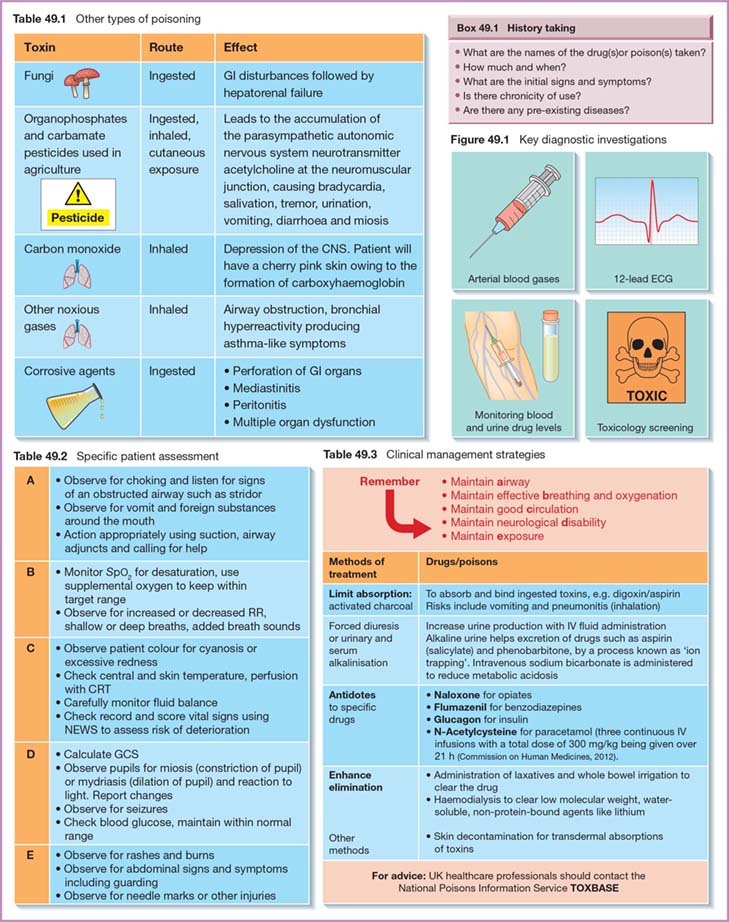49 In the UK around 14 0000 people are admitted to hospital each year with poisoning. Many are minors, but of the adults most are aged 20–29 years. Although exposure to a number of toxins can occur, the ingestion of pharmaceutical agents is, in cases of poisoning, the single, most common reason for attendance at Emergency Departments. Analgesia, antidepressants and calcium channel blockers are historically amongst the common culprits, with a recent increase seen in the use of recreational drugs (including so-called ‘legal highs’) and medication sold on the internet for weight loss. There has also been a rise in the abuse of household products like air fresheners.1 Whilst many cases of overdose and poisoning seen in the Emergency Department are as a result of self-harm, nurses should always be aware that they too can overdose patients when administering medication if they fail to follow local and national drug policies. Drugs that can be purchased over the counter are easily available, and are a popular choice for overdose, with paracetamol (acetaminophen) being a prime example. When this is taken in excess (a fatal dose usually exceeds 140 mg/kg, but does vary with each individual), the normal metabolism of the substance is disrupted. Taken in moderation, the liver cytochrome P-450 system (a super protein that renders pharmacological metabolites inactive) enables conjugation of the drug with glutathione (an antioxidant). In overdose, a toxic metabolite (N-acetyl-p-benzoquinoneimine) forms and then accumulates, overwhelming the glutathione supply. Initially, only nausea and vomiting occurs, but unless treated within 72 h hepatic necrosis and failure develops. Prognosis is likely to be poor, especially if signs of multiple organ dysfunction are developing.
Drug overdose and poisoning

Drugs commonly taken in overdose
Stay updated, free articles. Join our Telegram channel

Full access? Get Clinical Tree


